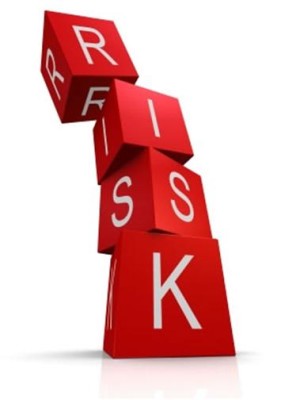Reader Question: What Does “Good Risk Management” Mean?

[dc]T[/dc]his, my first reader question, comes from John in Seattle:
I often see and hear people talking about good risk management being a good part of trading. What does this mean exactly? Limiting the size of your losses? Something else? Thank you.
John is right. I have summarized the process of technical/tactical trading basically as: 1) find patterns that suggest a statistical edge might be present, 2) take the appropriate position in the market, and 3) manage the risk in the trade. All of those steps are important, but I think most developing traders (and many firms, by the way) often stumble on risk management. There also seems to be a misconception in much of the retail trading literature that suggests that effective risk management simply means making sure your losses are small. This is a mistake because many very small losses add up quickly. Though the actual size of each loss might be very small, the end result of consistently taking small, but nearly certain, losses is a constant drain on the trading account. (Also, if I were the cynical type, I'd point out that brokers might support a trading strategy that encourages multiple transactions. If I were slightly less cynical I'd point out that most developing traders are fairly blind to costs of trading such as commissions, fees, and paying the spread in the instrument you're trading.)
I think the root of effective risk management is to make sure that no one loss can take you out of business. This means, of course, taking the appropriately sized positions (and too small is as bad as too large because then you are not being correctly compensated for the risks you are taking), but it also means being aware of things that could have an impact on the volatility of that position. Most of us size positions based on anticipated volatility, and if something happens that causes future volatility to be dramatically higher than expected, the position carries more risk than we expected. Oftentimes, these things can be predicted: earnings reports, upcoming economic reports, scheduled macro events, earnings reports in an important competitor—these types of events are often priced into the implied volatility of the options market, so prudent risk management usually includes at least a cursory look at implied pricing. However, there are nasty surprises out there that cannot be foreseen: classic "acts of God", takeovers, surprise announcements, weather-related events, etc. Some of these can cause tail events that lead to losses many times larger than what was initially planned on a position. These risks, in most cases, cannot be hedged effectively, but are effectively a cost of doing business. Trade long enough, and you'll have some of these nasty surprises.
Another part of risk management is position management. First of all, this means getting out of your position at your initial loss point—though some developing traders struggle with this, there are really no excuses here. It is very simple: have a stop point when you get in a trade and exit when the price gets there. Book your loss; the market just told you your position is wrong and there is no point in fighting that. Position management goes far beyond that, though. Do you have a plan for taking profits at specific points? What about for booking partial losses? Will you add back to a position? It is important to understand the consequences of each of these decisions, and I examined many scenarios and ideas for effective position management in the book.
(Part 1/2. Follow-up coming soon…)



